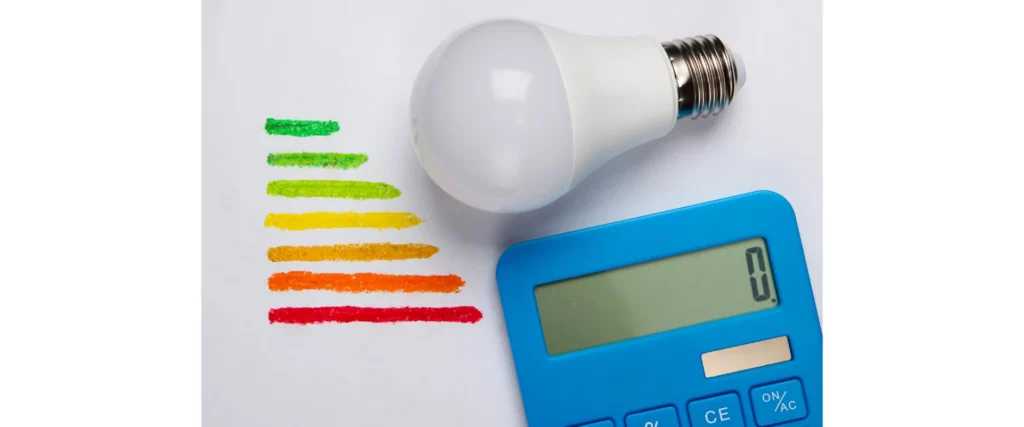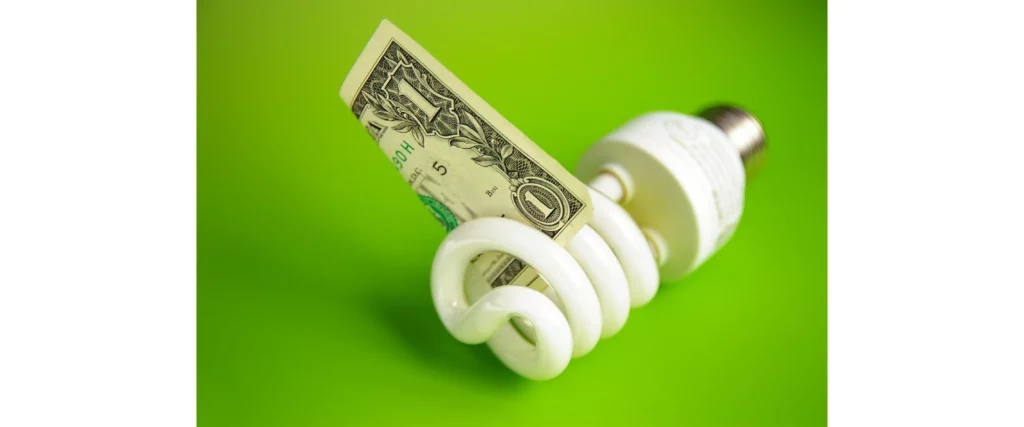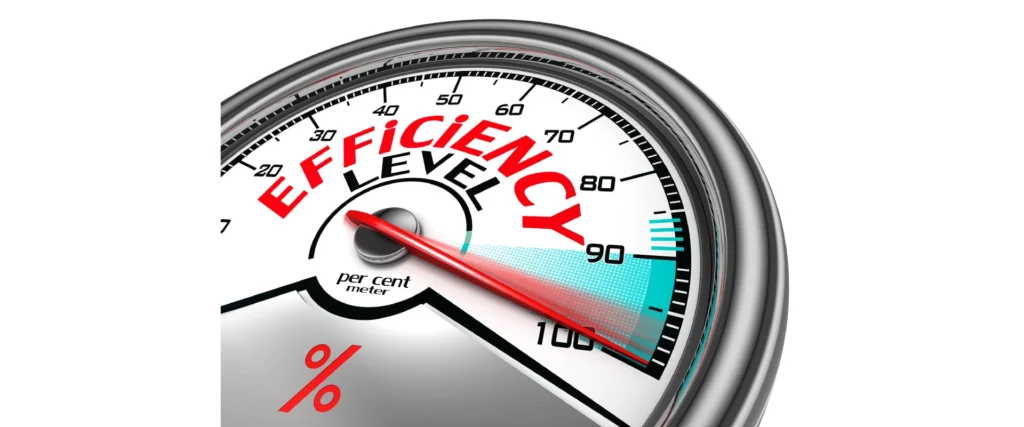In this article, we'll look at ways to improve the power density of your electric system, including motor, transformer, and bridge rectifiers.
While we've all heard of the benefits of higher power efficiency, there are some risks associated with these technologies.
But the demand for higher efficiency is a good thing for customers and power supply manufacturers, who are in a demand-supply spiral for improved efficiency. The aim is to achieve 99 percent efficiency.
Understanding Power Density
Before we delve into the methods of increasing power density, let's understand what it means and why it matters.
Power density is a critical metric in the design and performance of any electrical power system component, including generators, transformers, batteries, and power electronics.
It is typically expressed in watts per unit volume (W/cm³) or watts per unit weight (W/kg).
The higher the power density, the more power can be delivered or stored in a given volume or mass of the component.
Higher power density leads to smaller and lighter components, which is especially crucial in applications where space and weight constraints are significant, such as electric vehicles (EVs), renewable energy systems, and portable electronic devices.

Importance of Increasing Power Density
The quest for increasing power density in electric power systems holds immense significance, offering a myriad of advantages that positively impact the sustainability, efficiency, and overall functionality of energy systems.
Several key benefits associated with this pursuit are outlined below:
- Enhanced Efficiency: Higher power density boosts power system efficiency by delivering more power through smaller components, reducing energy losses. This leads to lower operational costs and a greener power generation and consumption approach.
- Compact Design: Power density advancements facilitate smaller, compact power systems. This is particularly useful in applications like EVs, aircraft, and microgrids with limited space. Compact designs save physical space, making installation and maintenance easier, saving time and resources.
- Energy Storage Advancements: Increasing power density in energy storage technologies like batteries and supercapacitors has a significant impact. It allows for faster energy delivery and recharging, benefiting electric vehicles by reducing charging times. Moreover, it supports the integration of intermittent renewable energy sources, ensuring a stable grid.
- Reduced Environmental Impact: Increased power density reduces environmental impact. It uses less material for the same output, conserving resources and reducing extraction and processing burdens. Smaller, more efficient systems also lower energy consumption, reducing emissions and supporting climate change efforts.

8 Strategies to Increase Power Density
Power density is a crucial factor in the design and performance of electric power systems.
To harness the numerous benefits it offers, various strategies can be employed to increase power density. Here are some detailed approaches:
- Advanced Materials: Advanced materials are important to increase power density. They have high thermal conductivity, low electrical resistance, and strong mechanical properties. They are used in power semiconductor devices, transformer magnetic cores, and conductive elements in cables. These materials help dissipate heat, reduce losses, and enhance performance, resulting in higher power density.
- High-Frequency Operation: Operating power systems at higher frequencies increases power density by reducing the physical size of components. However, it poses challenges such as switching losses and electromagnetic interference. To address these issues, advanced control and cooling techniques are crucial for efficient and reliable operation.
- Integration of Power Electronics: Integrating power electronics into the system boosts control and efficiency, increasing power density. IGBTs and SiC MOSFETs improve power conversion, management, and system efficiency.
- Advanced Cooling Techniques: Efficient cooling is crucial in intense systems to prevent overheating and maintain functionality. Liquid cooling, heat pipes, and thermoelectric cooling methods enhance heat dissipation and boost power density, allowing for more power without sacrificing reliability.
- Multi-Level Converter Topologies: Multi-level converter topologies, such as the modular multilevel converter (MMC), offer an effective way to increase power density in high-voltage applications. These topologies provide higher voltage resolution and reduce the stress on power semiconductor devices, resulting in reduced losses and enhanced power density.
- Optimal Sizing and Packaging: Proper sizing and packaging of power components are critical to maximizing power density. Compact and optimized designs minimize internal air gaps and reduce the distance over which energy is transferred, thereby improving overall efficiency. Well-designed packaging also ensures efficient heat dissipation and reliable operation.
- Smart System Integration: Smart control systems and AI algorithms improve power flow and enhance electric power systems' efficiency. Real-time data analysis helps adjust parameters for maximum power density and reliable operation. This integration boosts power systems' adaptability and responsiveness to changing conditions.
- Advanced Power Savers: Pro Power Save is an energy-saver that connects to your home's electric system and conserves electricity. It detects and controls electrical devices to optimize energy efficiency. This reduces electricity waste and increases the life expectancy of all electronics. It increases all devices' load capacity, making them stronger.

Increasing Power Density
Increasing power density in systems such as battery-operated industrial power tools enables smaller, lighter designs without compromising performance. This enhances ergonomics and allows for more wattage processing per square inch.
Power density, measured in watts per square meter (W/m2), is crucial for determining electrical component efficiency.
It can be calculated by either volume (output power divided by board area) or by area (board area divided by component height).
In automotive systems, electric vehicle chargers, and home power supplies, power density is important for size, efficiency, and safety. Texas Instruments leads in developing high-power density technologies.
Higher power density is vital for energy storage systems. It improves the energy-to-mass ratio and enables efficient discharge and recharge.
The camera flash is an example that needs a compact but powerful design. Insufficient power density would limit its effectiveness.

Increasing System Efficiency
Energy efficiency is vital for system reliability, as shown during the 2001 California energy crisis. It helped prevent state-wide outages that could have harmed the economy.
Energy efficiency brings cost savings, lower emissions, better reliability, and financial advantages for utilities and consumers.
Electricity plants have become more efficient over time due to advancements in technology and design.
In 2002, the best power plants could convert 53% of natural gas to electricity, and the U.S. Department of Energy plans to achieve 60% efficiency by 2050. Further improvements are also expected in natural gas combined cycle technology.
Improving energy management boosts economies, public health, and well-being.
It reduces greenhouse gases, enhances the power grid, and lessens infrastructure investments. Pursuing energy efficiency is vital for comprehensive benefits.
Increasing Transformer Efficiency
Transformers with more turns create stronger magnetic fields, improving efficiency. The number of turns is influenced by core material, coil wire, and signal frequency.
Higher turns also reduce energy waste. Efficient transformers can greatly save energy, equivalent to the power used by 40 million U.S. households each year, about 3.63 quadrillion BTU.
Energy-efficient appliances reduce electricity use and ease transformer demand. Transformers are typically 97-99% efficient but become less efficient with load fluctuations. High-efficiency transformers are a wise investment for energy savings.
Learning about transformers, like using Linquip Transformers Expert, enables sharing knowledge. A transformer's efficiency is measured by its temperature rise, with lower rises indicating higher efficiency.
Copper's low resistance aids in creating cooler transformers. Those with an 80-degree rise are more efficient, with reduced heat waste, longer lifespan, and fewer needed transformers.

Increasing Motor Efficiency
Improving motor efficiency is crucial for conserving energy. The U.S. Department of Energy suggests that millions of 1 hp motors in American manufacturing could save a significant amount of energy.
Each year, around 600,000 motors fail, resulting in potential savings of 62 to 104 billion kWh and a reduction in carbon emissions by 29.5 million metric tons.
Traditionally, improving motor efficiency focuses on the entire motor system, aiming to minimize resistance losses and optimize magnetic energy in the core, significantly boosting overall efficiency.
Using thinner electrical steel laminations in rotors can slightly improve efficiency, but may affect motor speed and size.
Despite the higher cost, these high-quality laminations are a viable option. Similarly, copper wires enhance efficiency but increase motor cost by 30%. Still, copper is worth considering in motor design for its efficiency benefits.

Where to Find Power Dense Components?
To meet the growing need for power-dense components in electric power systems, there are many advanced options available from reliable manufacturers and suppliers.
Here are some sources to find these components and improve your electric power systems:
- Specialized Component Manufacturers: Companies like Infineon Technologies, Texas Instruments, and Mitsubishi Electric specialize in power electronics, offering high-quality components such as MOSFETs, IGBTs, power management solutions, and high-frequency transformers.
- Energy Storage Solution Providers: LG Chem, Panasonic, and Samsung SDI provide top-quality energy storage solutions, including power-dense batteries and supercapacitors, ideal for various applications. These reputable providers are renowned for their high-performance and innovative offerings.
- Renewable Energy System Suppliers: Renewable energy generators and transformers, rely on established companies like ABB, Siemens Energy, and General Electric. They offer efficient and innovative solutions for renewable energy integration.
- Electric Vehicle Component Manufacturers: When seeking power-dense components for electric vehicles, turn to top manufacturers like Tesla, BMW, and Nissan. They use such components to boost performance and range.
Conclusion
As a tech enthusiast and advocate for sustainable energy, studying power density's impact on electric power systems has been fascinating. Knowing its importance in enhancing efficiency, reducing environmental impact, and enabling compact designs has sparked my curiosity to explore further.
Exploring strategies for increased power density reveals innovative materials and system integration driving power system evolution. These strategies have potential to revolutionize electric vehicles, renewable energy, and energy storage for a greener future.
Sources

